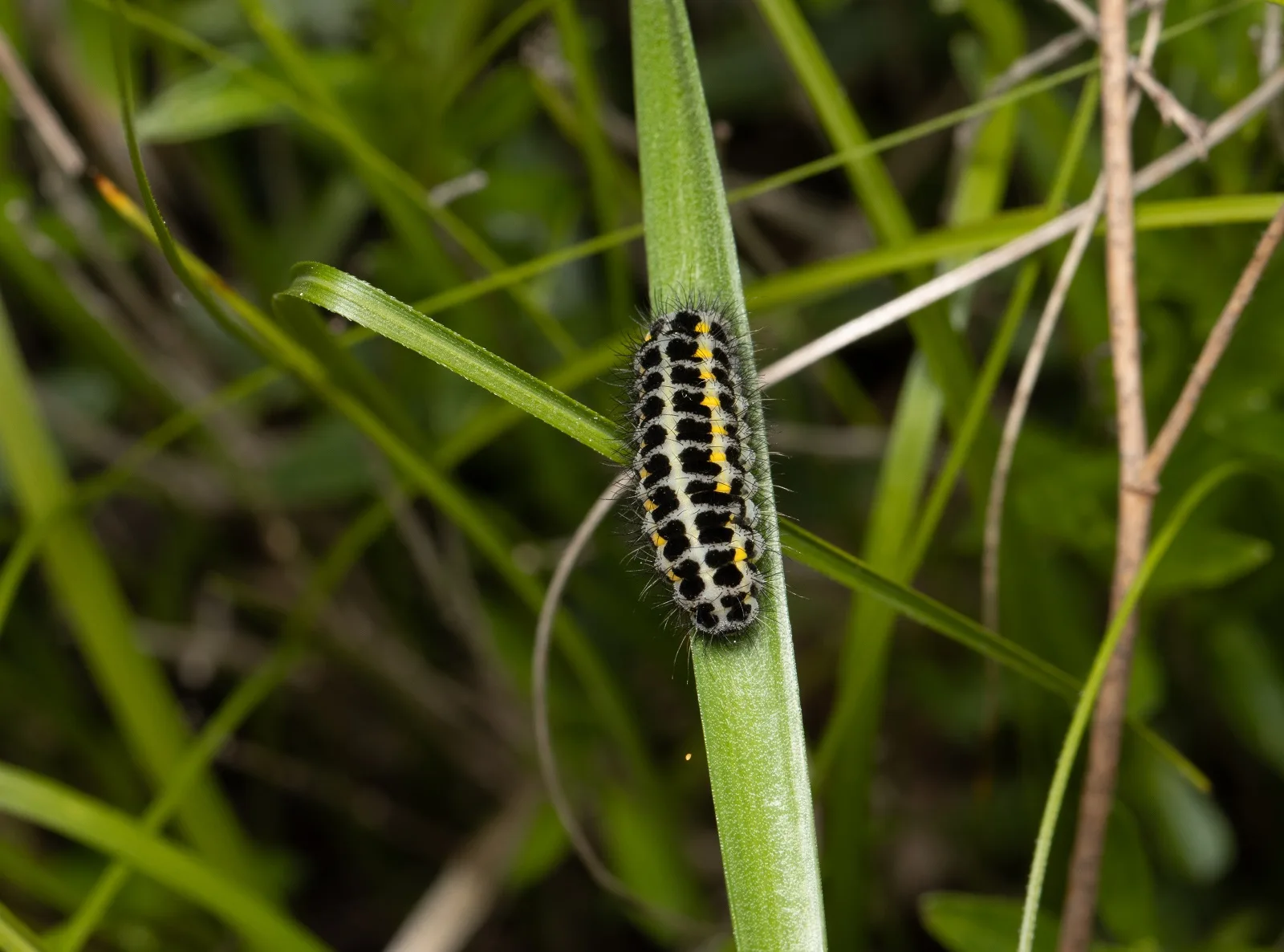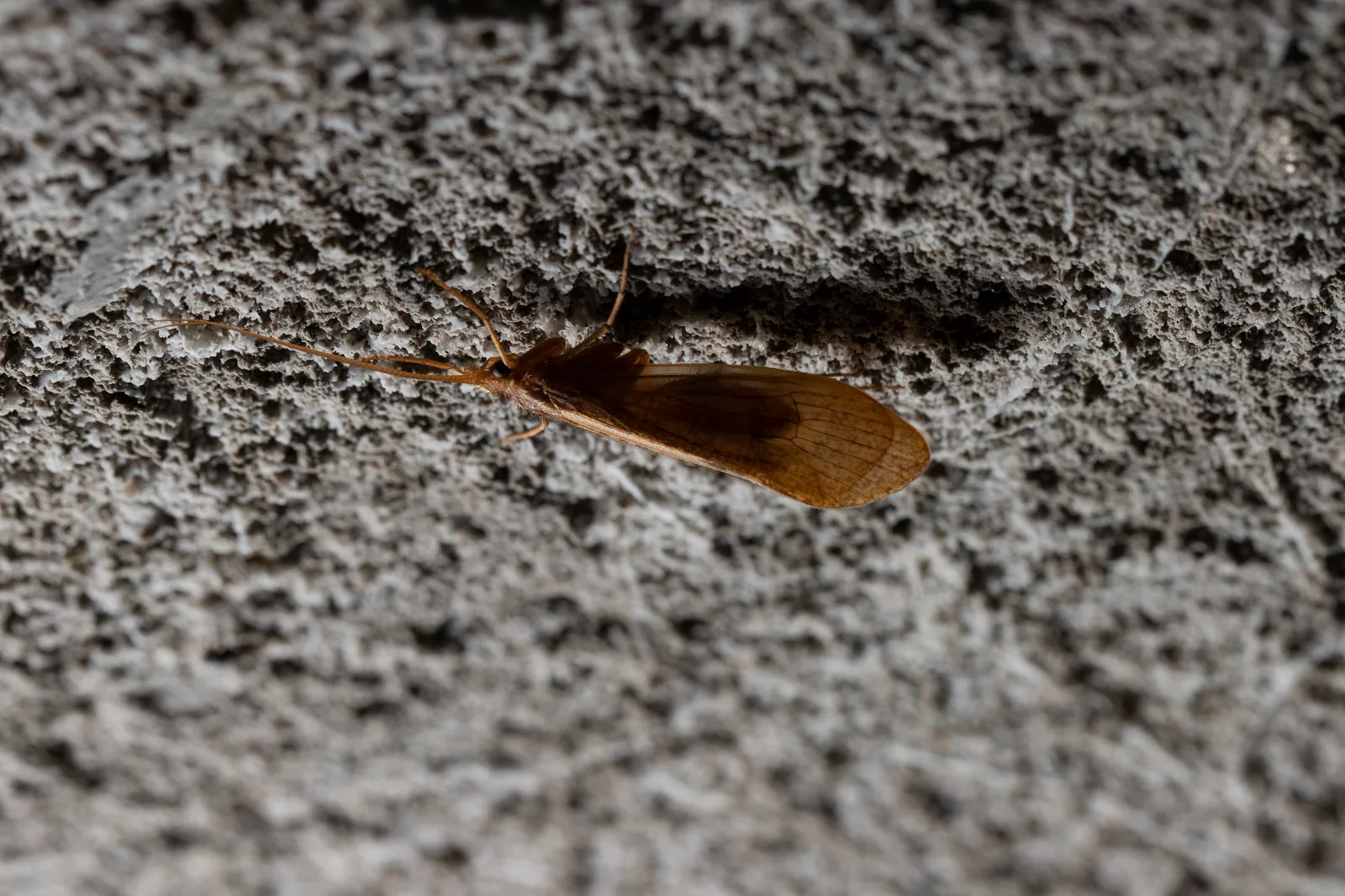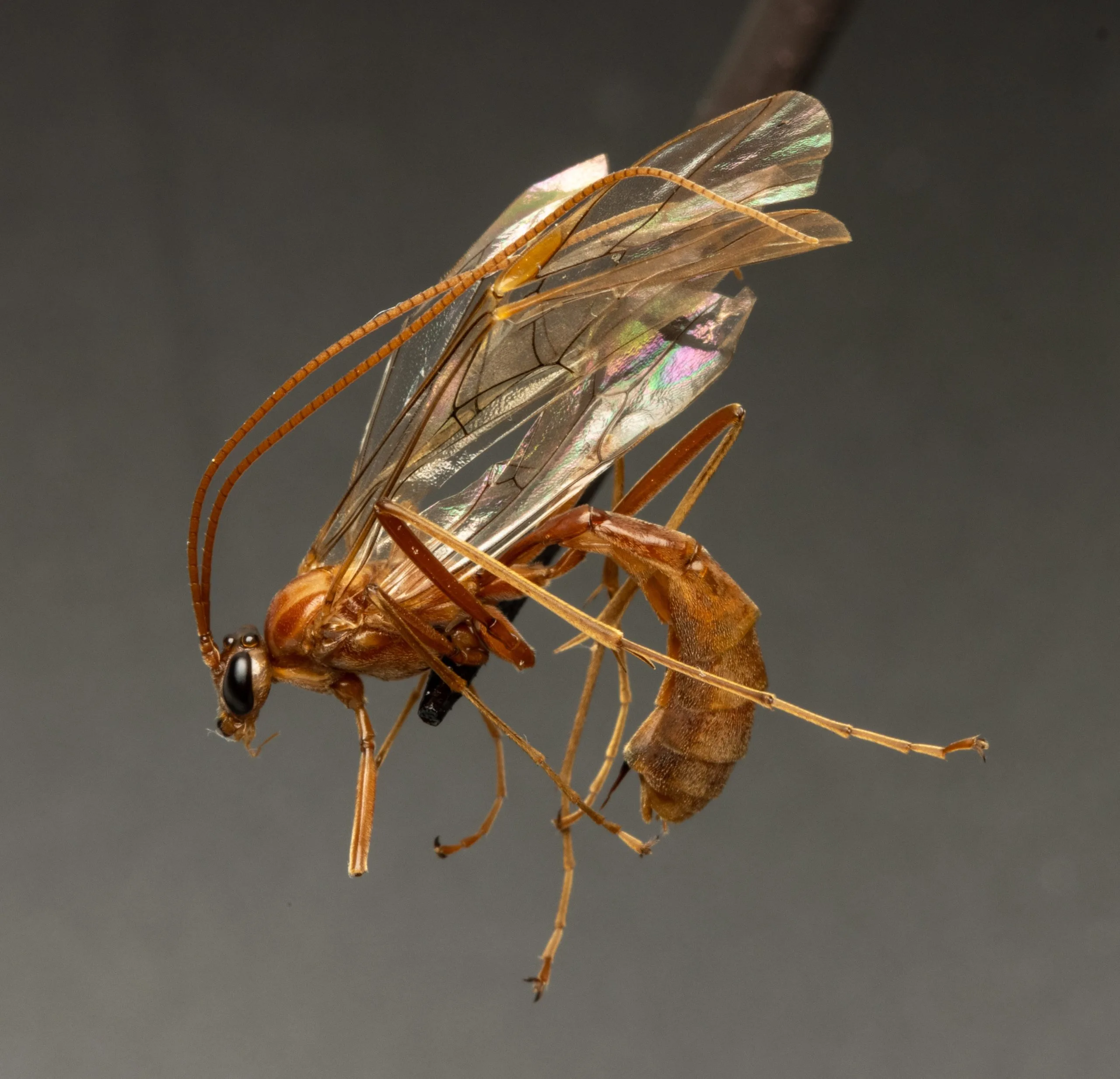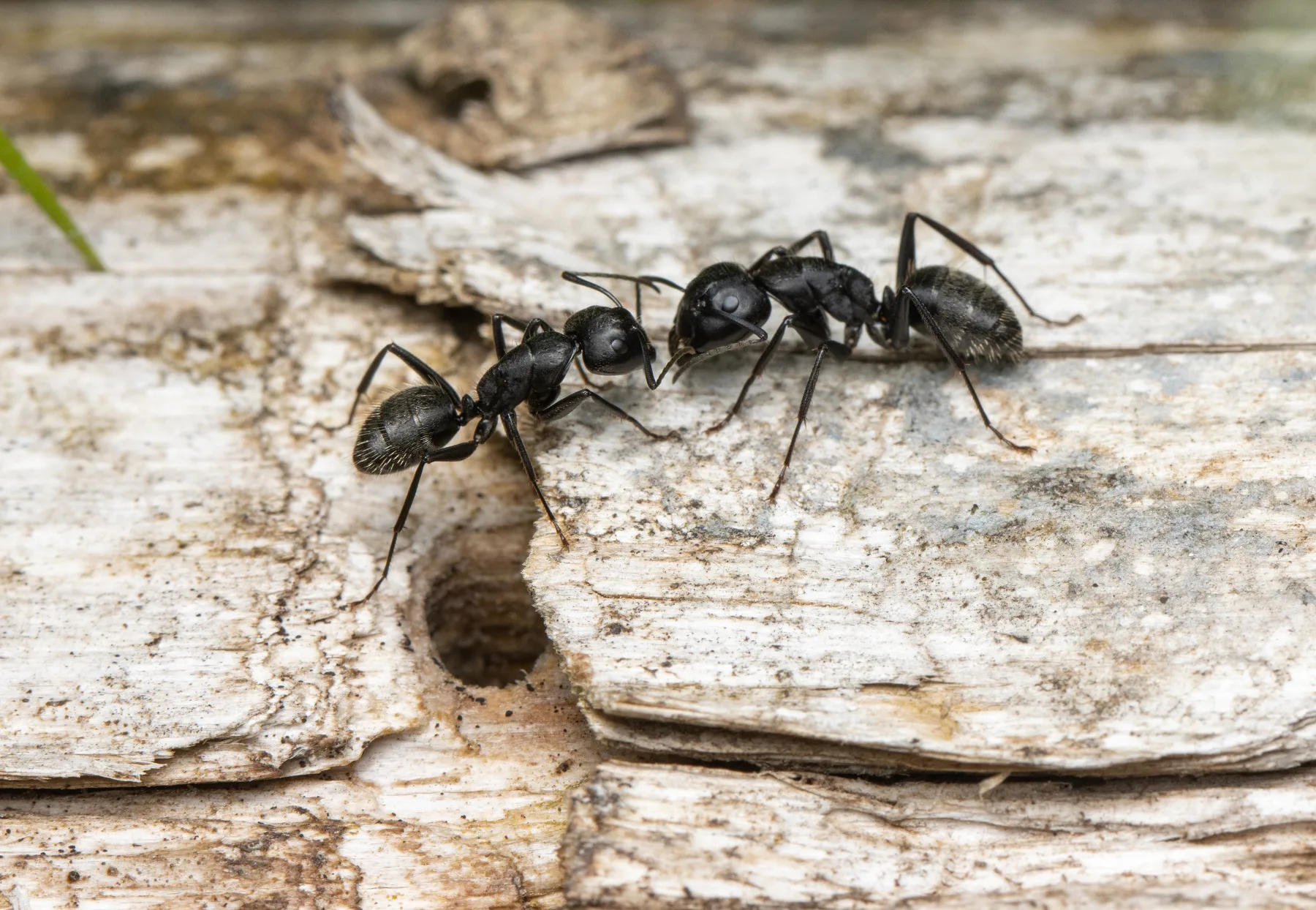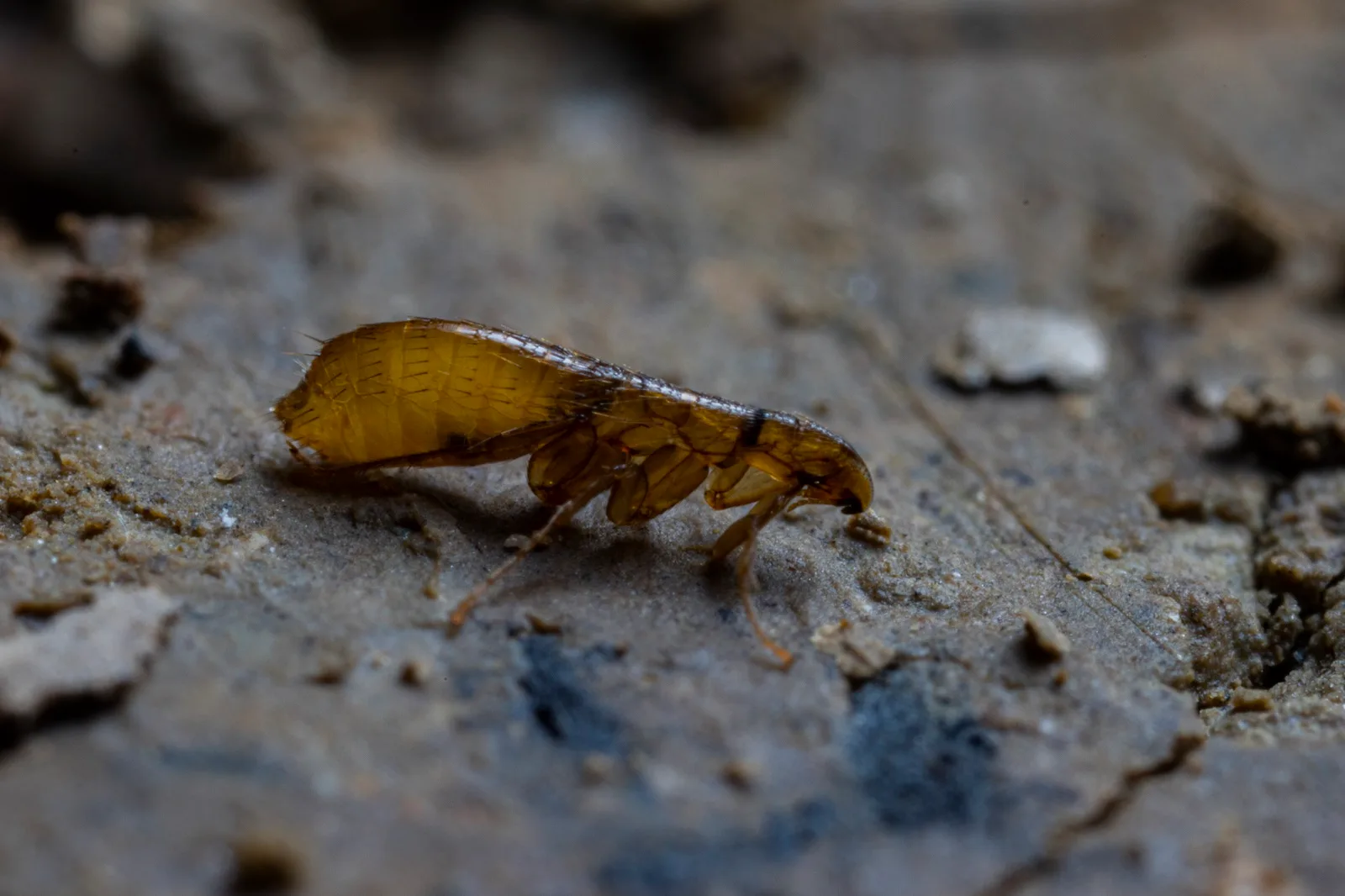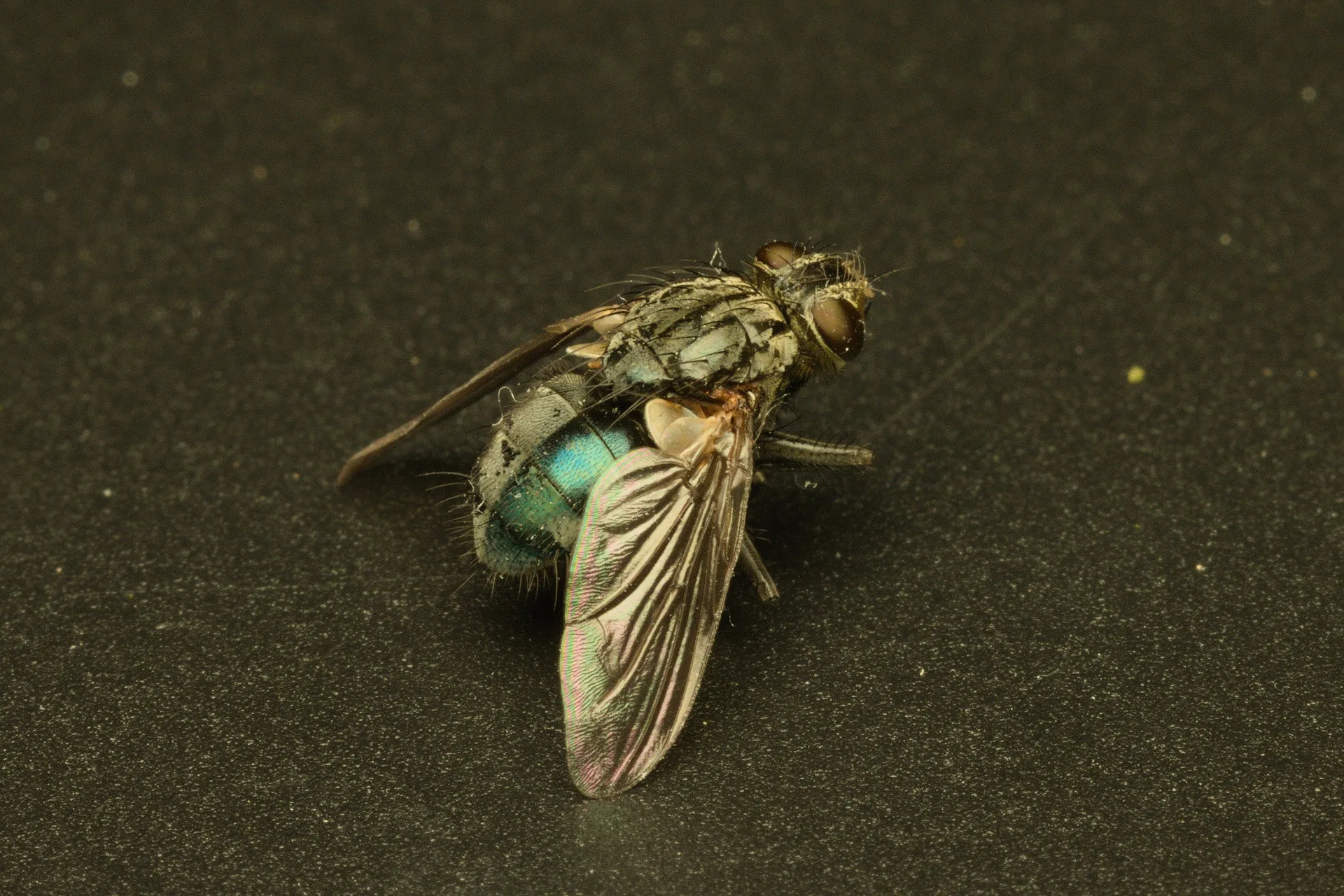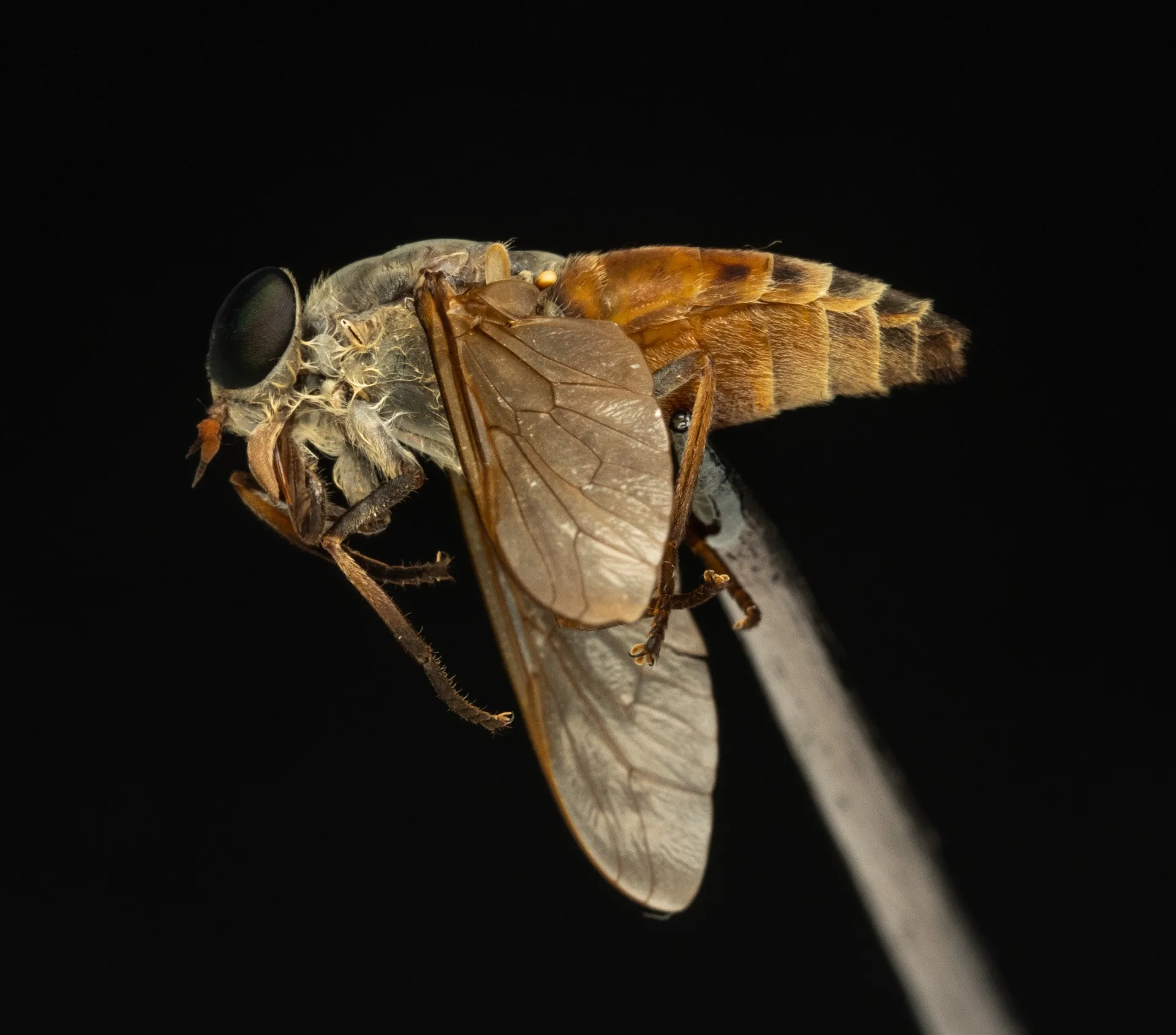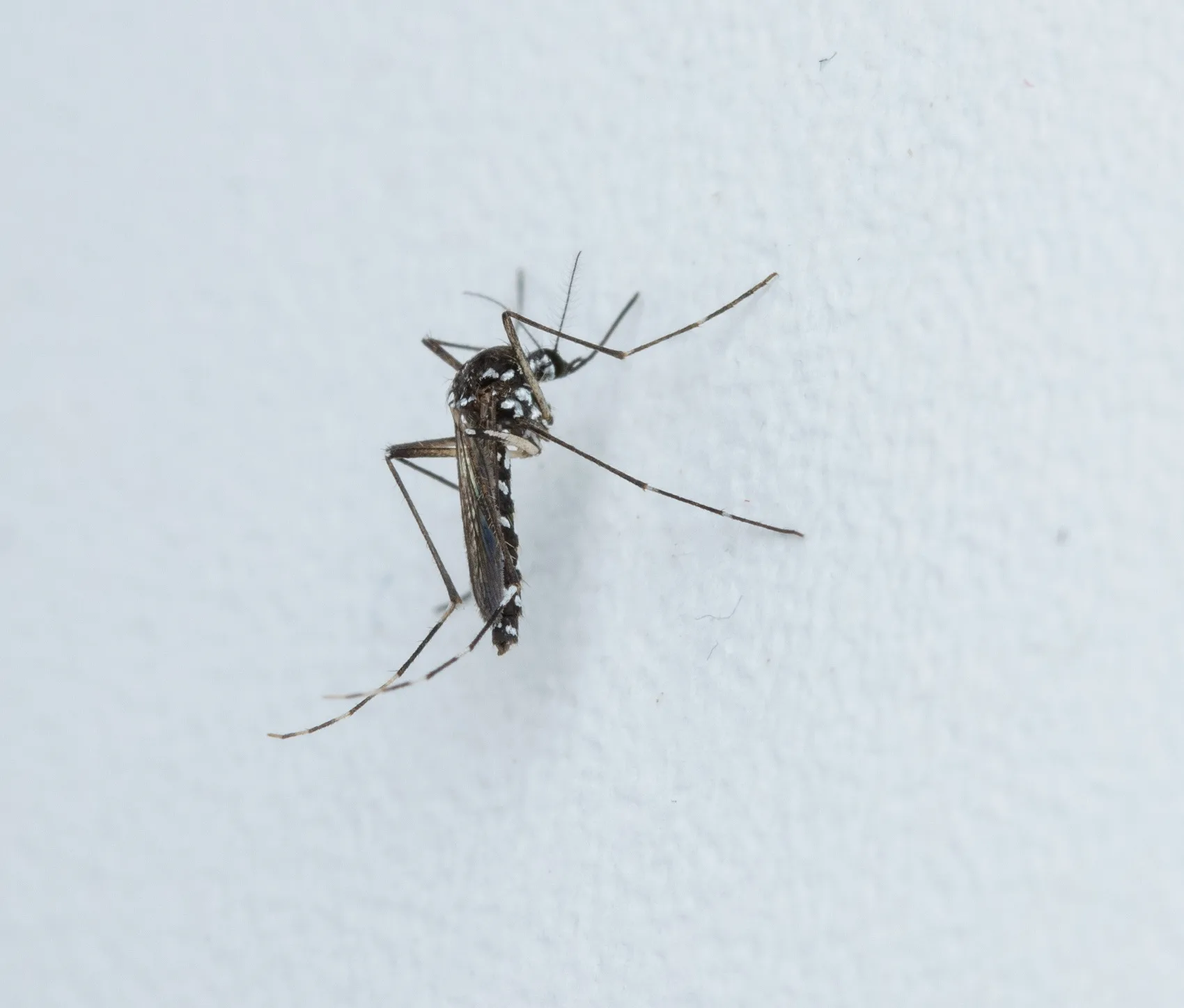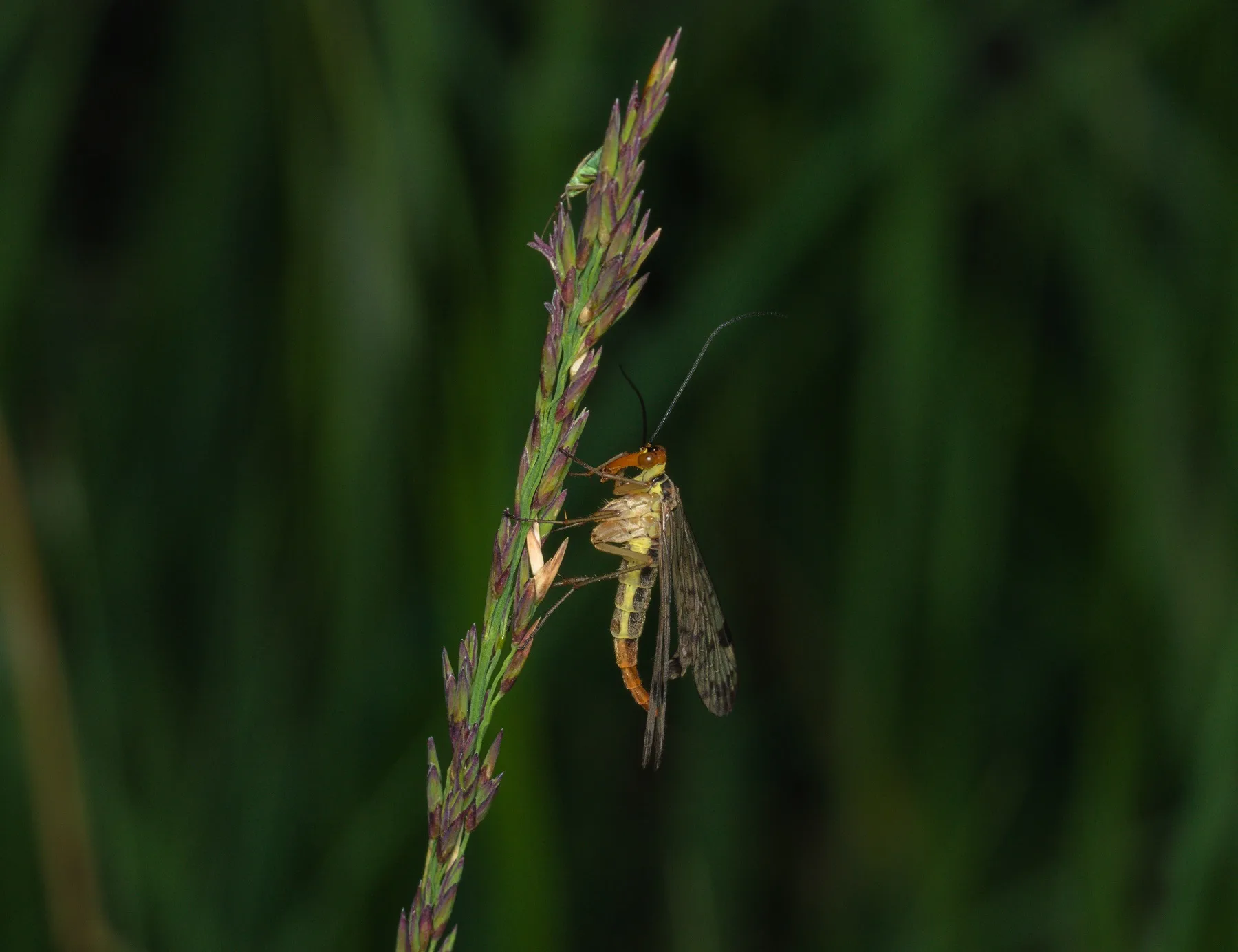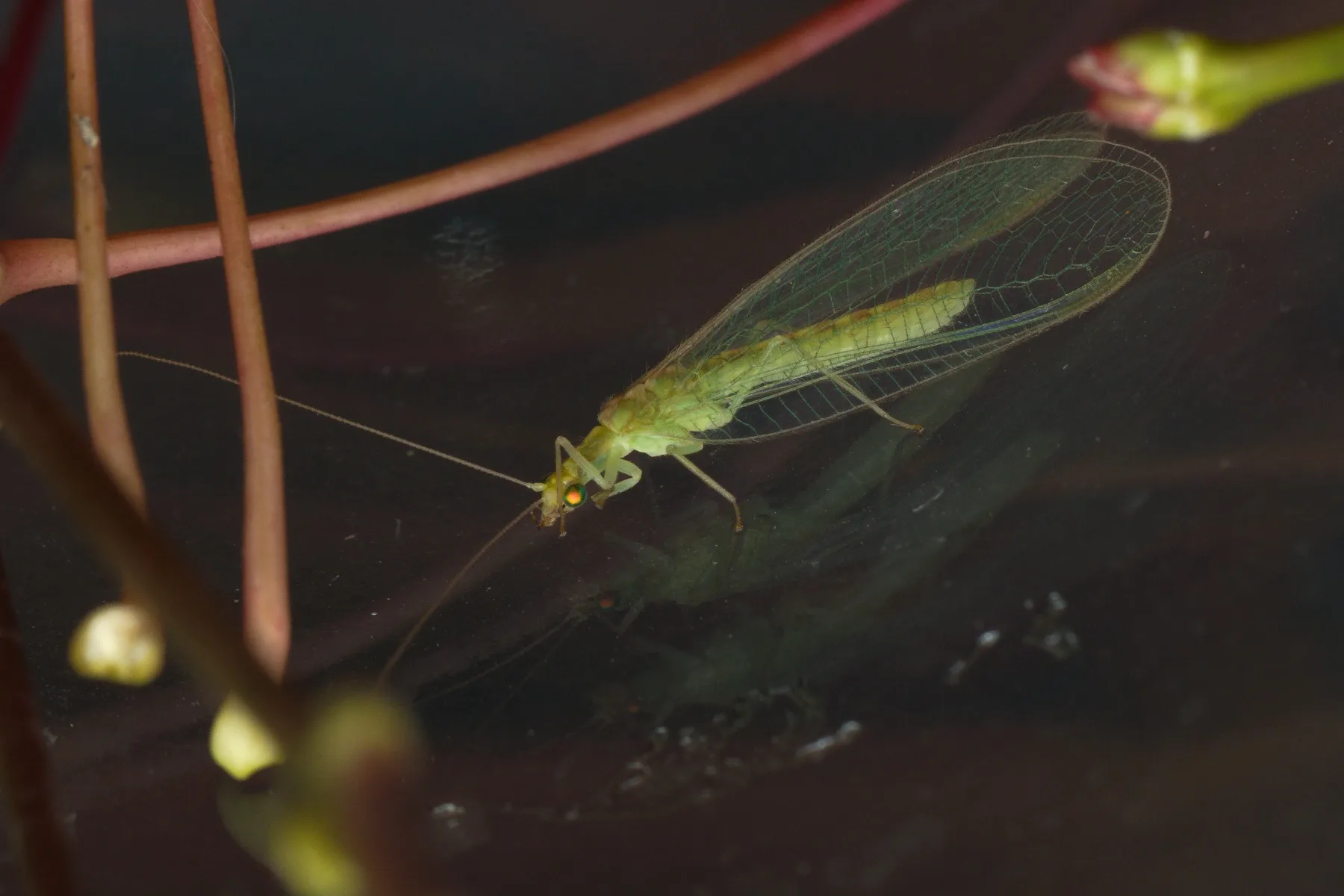- Insects
Ectobius
Wood cockroaches are among the smaller representatives of cockroaches, with a body length of around one centimetre . They are generally dark brown with a visible lighter border on the pronotum, although some may be entirely light brown. The body consists of a head, thorax and abdomen.
On their head, they have long, filamentous antennae, large compound eyes, two ocelli, and posteriorly oriented chewing mouthparts.
The thorax is characterised by a shield-shaped pronotum that covers most of the head. The wings consist of partially hardened tegmina with visible venation, while the second pair of wings is membranous and folded fan-like beneath the first pair of wings. In females, the wings may be shorter than the abdomen. The thorax also bears three pairs of legs which are strongly spined and robust, as cockroaches mostly move along the ground.
At the end of the abdomen, there are two short, thickened, and segmented cerci.
The genus Ectobius includes around 70 species, primarily distributed in the Palearctic region, with a few species found in Africa. As their name suggests, they are predominantly woodland species that live in leaf litter and forest debris.
Wood cockroaches are omnivorous and, like other cockroaches, host endosymbiotic bacteria of the genus Blattabacterium. These bacteria live in their fat tissues and assist in recycling nitrogen, which may be scarce in their primarily plant-based diet.
Males and females communicate using pheromones as well as acoustic signals, produced by tapping their abdomens against a substrate. Females lay eggs in a specialised capsule called an ootheca, which they attach to a substrate. Their nymphs resemble adults but are smaller and lack fully developed wings, showing only wing buds.
More info
Related arthropods
Authors
- Urban Bogataj,
- Gregor Bračko,
- Teo Delič,
- Cene Fišer,
- Žiga Fišer,
- Rok Kostanjšek,
- Rudi Verovnik,
- Miloš Vittori,
- Valerija Zakšek.
Students Vito Ham, Vesna Jurjevič, Gaj Kušar, and Adrijan Samuel Stell Pičman also participated in the project.
